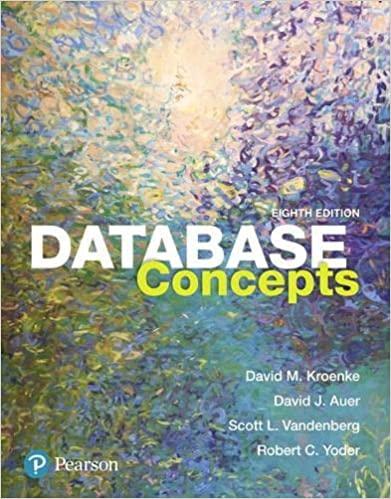Answered step by step
Verified Expert Solution
Question
1 Approved Answer
Identifying Risks from NIST Generative AI Profile: The risks identified in the NIST Generative AI Profile include: CBRN Information: Lowered barriers to entry or eased
Identifying Risks from NIST Generative AI Profile:
The risks identified in the NIST Generative AI Profile include:
CBRN Information: Lowered barriers to entry or eased access to materially nefarious information related to chemical, biological, radiological, or nuclear CBRN weapons, or other dangerous biological materials.
Confabulation: The production of confidently stated but erroneous or false content known colloquially as hallucinations or fabrications
Dangerous or Violent Recommendations: Eased production of and access to violent, inciting, radicalizing, or threatening content as well as recommendations to carry out selfharm or conduct criminal or otherwise illegal activities.
Data Privacy: Leakage and unauthorized disclosure or deanonymization of biometric, health, location, personally identifiable, or other sensitive data.
Environmental: Impacts due to high resource utilization in training GAI models, and related outcomes that may result in damage to ecosystems.
HumanAI Configuration: Arrangement or interaction of humans and AI systems which can result in algorithmic aversion, automation bias or overreliance, misalignment or misspecification of goals andor desired outcomes, deceptive or obfuscating behaviors by AI systems based on programming or anticipated human validation, anthropomorphizing, or emotional entanglement between humans and GAI systems; or abuse, misuse, and unsafe repurposing by humans.
Information Integrity: Lowered barrier to entry to generate and support the exchange and consumption of content which may not be vetted, may not distinguish fact from opinion or acknowledge uncertainties, or could be leveraged for largescale dis and misinformation campaigns.
Information Security: Lowered barriers for offensive cyber capabilities, including ease of security attacks, hacking, malware, phishing, and offensive cyber operations through accelerated automated discovery and exploitation of vulnerabilities; increased available attack surface for targeted cyber attacks, which may compromise the confidentiality and integrity of model weights, code, training data, and outputs.
Intellectual Property: Eased production of alleged protected, trademarked, or licensed content used without authorization andor in an infringing manner; eased exposure to trade secrets; or plagiarism or replication with related economic or ethical impacts.
Obscene, Degrading, andor Abusive Content: Eased production of and access to obscene, degrading, andor abusive imagery, including synthetic child sexual abuse material CSAM and nonconsensual intimate images NCII of adults.
Toxicity, Bias, and Homogenization: Difficulty controlling public exposure to toxic or hate speech, disparaging or stereotyping content; reduced performance for certain subgroups or languages other than English due to nonrepresentative inputs; undesired homogeneity in data inputs and outputs resulting in degraded quality of outputs.
Value Chain and Component Integration: Nontransparent or untraceable integration of upstream thirdparty components, including data that has been improperly obtained or not cleaned due to increased automation from GAI; improper supplier vetting across the AI lifecycle; or other issues that diminish transparency or accountability for downstream use.
Explanation:
The above risks are directly extracted from the NIST Generative AI Profile and cover a wide range of potential threats and challenges assoc
Creating Prompts for Identifying Risks:
To create effective prompts for identifying the risks, we can use keywords based on the possible answers given by the users. Here are some example prompts:
CBRN Information:
"Can you describe any concerns regarding the dissemination of hazardous chemical, biological, radiological, or nuclear information through AI systems?"
Keywords: "hazardous materials," CBRN "dangerous information," "chemical weapons"
Confabulation:
"What are the implications of AI generating false or misleading content confidently?"
Keywords: "false content," "hallucinations," "fabrications," "misleading information"
Dangerous or Violent Recommendations:
"Have you encountered AIgenerated content that incites violence or illegal activities?"
Keywords: "violent content," "incitement," "radicalizing," "illegal recommendations"
Data Privacy:
"What risks are associated with the leakage or unauthorized disclosure of sensitive data by AI systems?"
Keywords: "data leakage," "unauthorized disclosure," "privacy," "sensitive data"
Environmental:
"How does the resource utilization in training AI models impact the environment?"
VALIDATE THE RISKS AND PROMPTS AND REPORT HOW YOU DID IT AND THE SOURCES AND VALIDATE THE MAP OF RISKS IN EACH PHASE HOW AND WHERE THE PROBABILITY OF OCCURRENCE OF EACH RISK IN EACH PHASE IS BASED VALIDATE THE HEATMAP
Step by Step Solution
There are 3 Steps involved in it
Step: 1

Get Instant Access to Expert-Tailored Solutions
See step-by-step solutions with expert insights and AI powered tools for academic success
Step: 2

Step: 3

Ace Your Homework with AI
Get the answers you need in no time with our AI-driven, step-by-step assistance
Get Started


